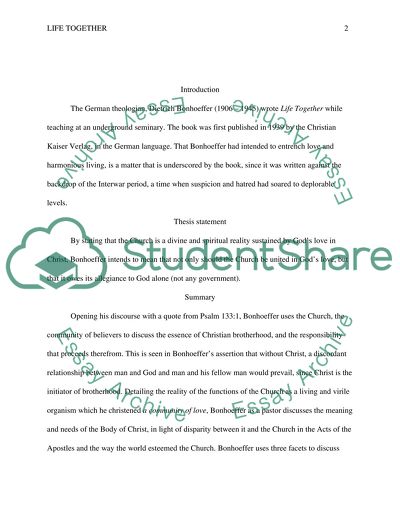Cite this document
(“Religion and Theology Essay on Life Together by Bonheoffer - 1”, n.d.)
Retrieved from https://studentshare.org/religion-and-theology/1457117-life-together
Retrieved from https://studentshare.org/religion-and-theology/1457117-life-together
(Religion and Theology Essay on Life Together by Bonheoffer - 1)
https://studentshare.org/religion-and-theology/1457117-life-together.
https://studentshare.org/religion-and-theology/1457117-life-together.
“Religion and Theology Essay on Life Together by Bonheoffer - 1”, n.d. https://studentshare.org/religion-and-theology/1457117-life-together.


